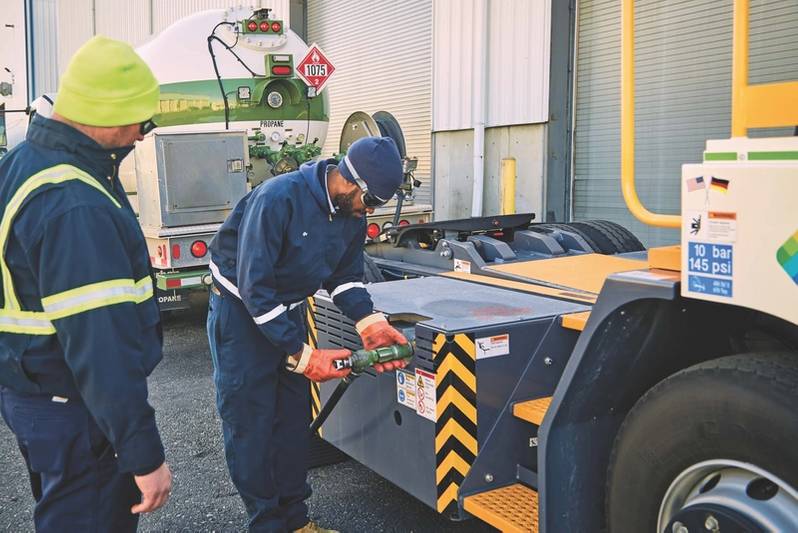Propane Cargo Handling Equipment Safety Tips
Aug 12, 2024

(Photo: Propane Education and Research Council)
As the adoption of propane-powered equipment in ports continues to grow, implementing proper safety measures becomes more crucial.
Supply chain professionals throughout the country rely on cargo handling equipment (CHE) to keep containers, trailers, and other materials on the move. With rapidly changing conditions in a port, it’s important to keep operators abreast of important safety considerations when working with equipment like forklifts and port tractors.
Propane offers a clean, affordable, and safe energy solution for ports, powering marine vessels, generators, forklifts, port tractors, and other medium-duty vehicles. As the adoption of propane-powered equipment in ports continues to grow, implementing proper safety measures becomes more crucial. Here are the top safety tips for operating propane-powered equipment in port environments.
Forklift safety tips
Forklifts are among the most widely used pieces of equipment at inland and seaports, capable of moving containers both inside warehouses and out. Despite being so common, it’s important to keep these safety tips top-of-mind to avoid accidents:
Propane cylinder safety
Beyond the basics of forklift safety, each energy source — whether propane, diesel, gasoline, or electric — has its own set of safety precautions. As a popular, safe, and powerful energy source for forklifts and other applications, it’s important for operators to safely handle and store propane cylinders.
 (Photo: Propane Education and Research Council)
(Photo: Propane Education and Research Council)
Propane autogas refueling
There are a variety of propane refueling configurations available for port terminals, including permanent, temporary, and mobile solutions. Most on-site refueling includes large capacity fuel storage tanks equipped with a pump, meter, and one or more dispensers. Propane is delivered straight to the port by a local propane supplier and in most cases, port authorities can purchase the equipment or lease it from the local propane supplier.
Propane autogas refueling equipment varies by manufacturer, each with its own safety recommendations. Therefore, it’s important to ensure operators receive adequate training. Fortunately, most suppliers offer refueling training to ensure operators stay safe on the job.
By working with your local propane supplier, port authorities can establish custom refueling systems and organize regular trainings to keep port operations running safely and efficiently.
Technology
Ports
Marine Equipment
Hardware
infrastructure
Alternative Fuels
Green Ports
Cranes & Material Handling
Equipment